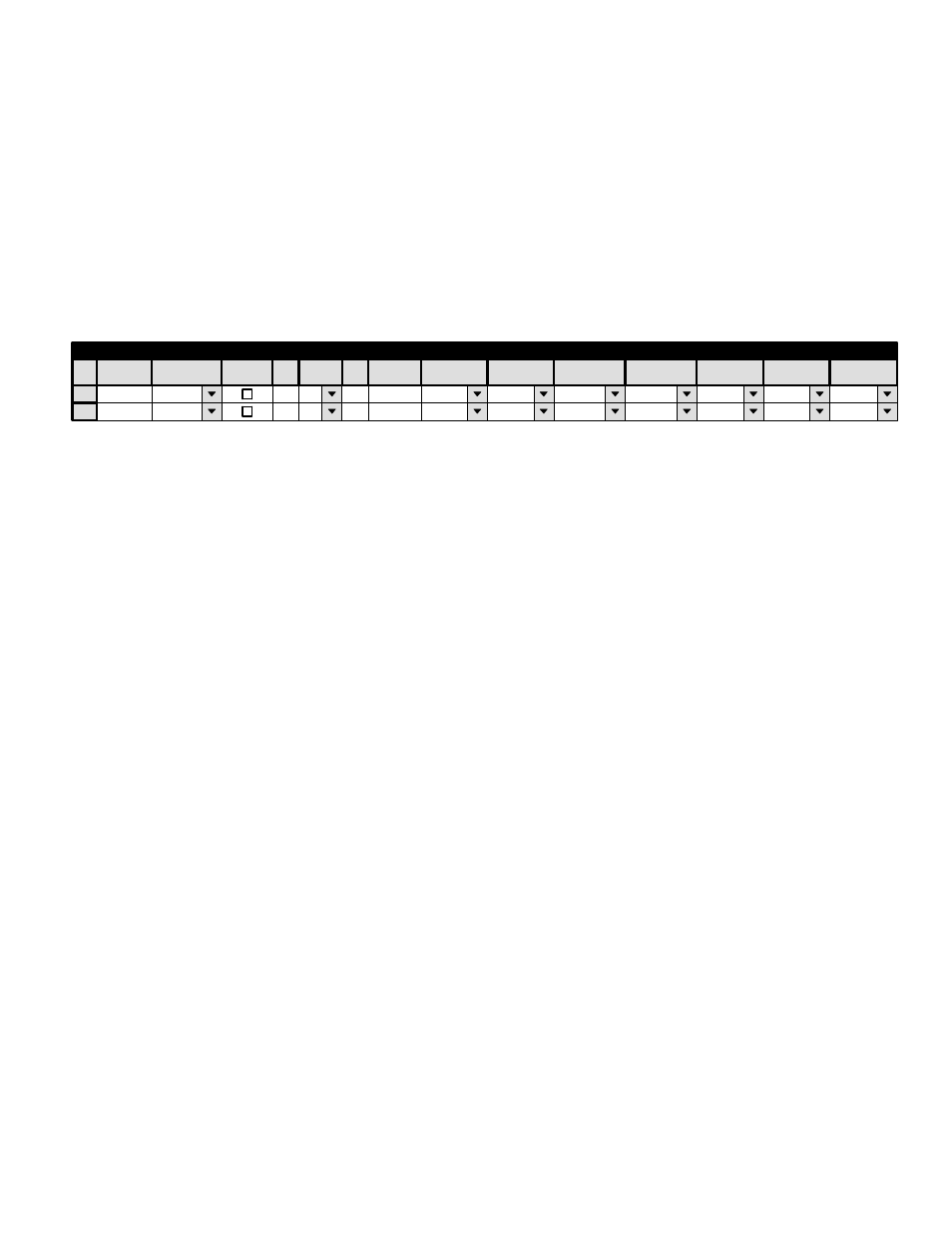External control device entries, Dd series switchers, Diamond (p. 5−127) – Grass Valley VM 3000 System Controllers v.7.4 User Manual
Page 337

Configurator
MPK Devices
5−127
VM 3000 Installation and Operating Manual
EXTERNAL CONTROL DEVICE ENTRIES
Note: Even though they are not shown on the Serial Protocol table as MPK devices, “ESswitch,” ASCII, DD, and
GVG200 control devices require entries to the MPK Devices table.
DD SERIES SWITCHERS
Hardware installation was discussed on page 2−81; serial port configuration was discussed on page 5−25. Figure 5−101 shows
an example table for the system on page 2−81.
DIA−MNEM
DIAMOND
SI3
4
DIA−INP
DIA−OUT
DIA−ASCI
SERIAL
SI3
ASC−INP
ASC−OUT
1
MPK Devices
MPK
Expansion
Pass
Board
Port
Address
Input Sets
Output Sets
Level Set
Overide Set
Sequence Set
2
6
KXYZ−LEV
Devices
word
In Panel
Out Panel
KXYZ−LEV
Figure 5−101. Entry for system shown on page 2−81.
Device
Type
The dual entries are necessary because of the two hardware connections.
No “Address” entry is required.
The Input, Output, and Level Sets named on this table should include all inputs, outputs, and levels that will be controlled
by the Diamond switcher. As a precaution, you may wish to restrict control to selected outputs.
For device Type “Diamond,” the Input and Output Sets must be created specifically for use by E−MEM devices. The Input
Set is the source of the mnemonics that will appear on the Diamond console. The Output Set contains a cross−reference be-
tween each router output wired to the DD switcher and a number that the DD will use to refer to that output.
Notice that device Type “Serial” is used for the “ASCII” protocol connection. For device Type “Serial,” the Input and Output
Sets must be created specifically for use by “serial” devices: the Input Set describes which router inputs can be selected by
the DD (and a number that the DD will use to refer to that input); the Output Set describes which router outputs are wired
to the DD (and a number that the DD will use to refer to that output).
For details concerning CP Input Sets, see page 5−58.
